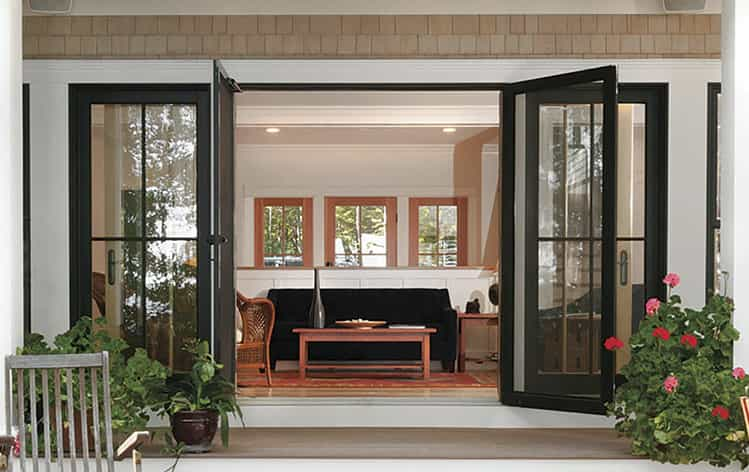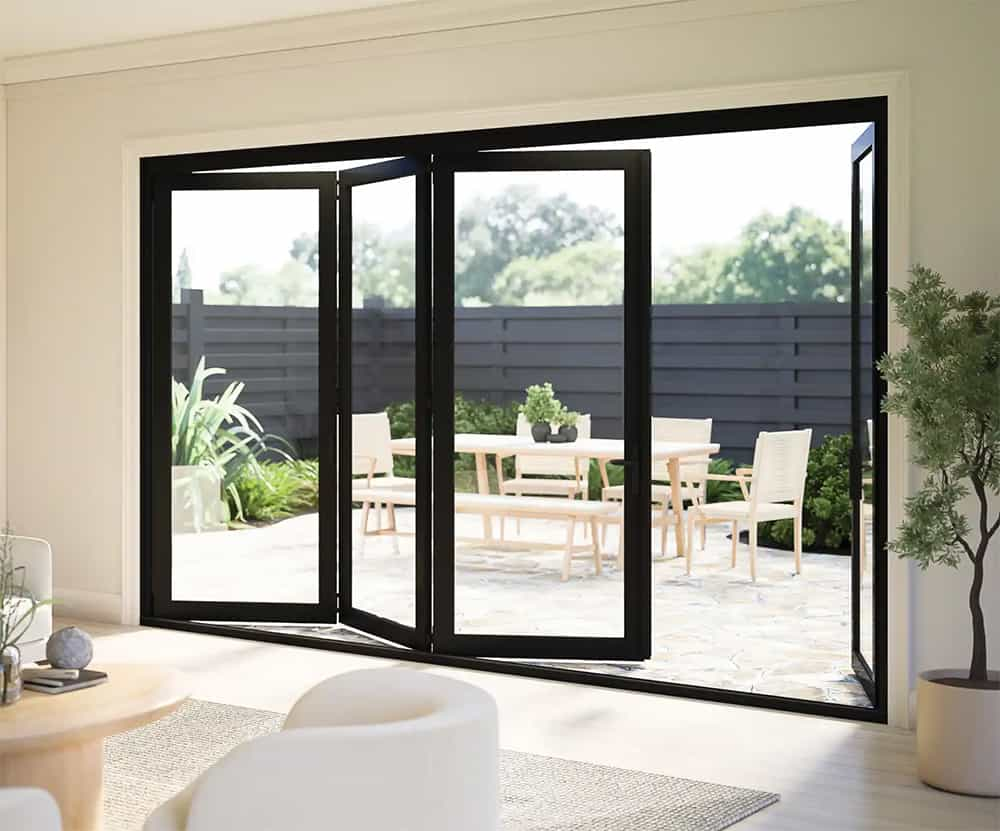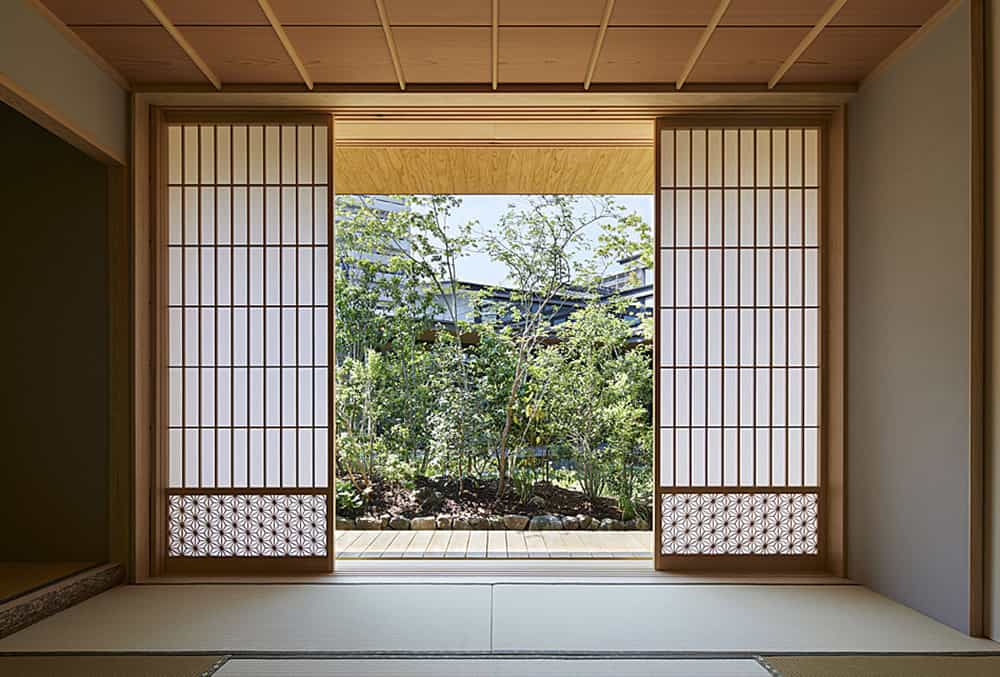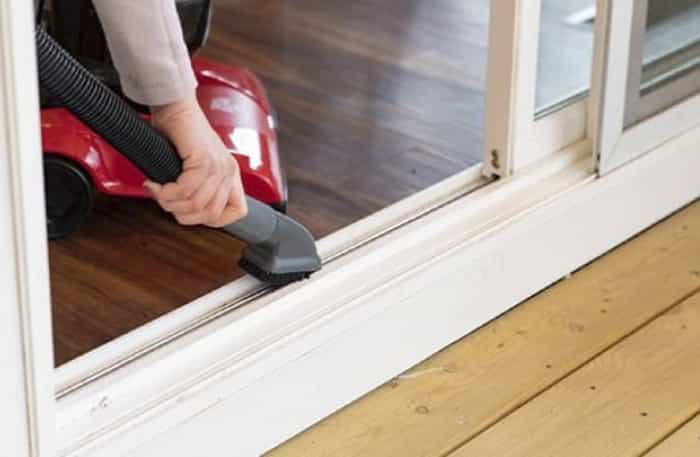It’s time to get a free consultation to choose the suitable windows and doors for your home!
Sliding doors are a versatile and stylish option for both interior and exterior spaces in your home. They can serve as dividers, entrances, or simply as a way to let in refreshing air. Not only do they save space compared to traditional swinging doors, but they also come in various designs and materials to suit your personal style and needs.

As you begin your search for the perfect sliding door, you’ll encounter a wide range of types, each with its own unique set of features. Some popular types include sliding patio doors, barn doors, bypass doors, and even Japanese-inspired Shoji doors. You’ll also find options like bi-fold, pocket, and French sliding doors. Understanding the benefits and characteristics of each type will help you make an informed decision for your home improvement project.
Key Takeaways
- Sliding doors save space and come in various designs to fit your style.
- Types of sliding doors include patio doors, barn doors, bypass doors, and Shoji doors.
- Consider materials, installation, and maintenance when choosing the perfect sliding door for your home.
Why Choose Sliding Doors
Sliding doors are a popular option for many homeowners because they provide a functional and visually appealing solution for entryways, patios, and even interior spaces. They are designed to move horizontally along a track, allowing for easy operation and space-saving benefits.
Security Features
When it comes to sliding doors, there is a range of security features available. Some doors come with multiple locking points to ensure that your home remains secure. Reinforced glass or shatter-resistant materials can also be a part of their design to offer increased protection. To further boost the security of your sliding doors, you may consider installing additional locks or security bars. Just make sure to always check the integrity of your door’s hardware and keep it well-maintained.
Space Utilization
One of the main benefits of sliding doors is their space-saving nature. Unlike traditional hinged doors, they don’t require any space to swing open, which makes them an excellent choice for smaller rooms or areas where floor space is limited. With their sleek design, sliding doors can effortlessly blend into the surrounding architecture, providing an unobtrusive and elegant solution for dividing or connecting spaces.
Another notable advantage of sliding doors is their ability to let in an abundance of natural light. Large glass panels not only brighten up your living spaces but also create an illusion of a bigger and more open room. These doors can help you maximize the available space in your home while enhancing its aesthetic appeal.
Types of Sliding Doors
Patio Sliding Doors
Patio sliding doors are a popular choice for connecting your home to the outdoors. Their versatility allows you to enjoy natural light and outdoor views while offering easy access to your patio, deck, or garden area. They provide a wide opening for ease of movement, making them perfect for entertaining or rolling in larger furniture. Available in various styles and materials, patio sliding doors let you create a seamless transition between your indoor and outdoor spaces, enhancing your home’s overall aesthetic.
Barn Doors
Barn doors, traditionally used in agricultural settings, have become a sought-after feature in modern homes due to their rustic charm and functionality. Mounted on a sliding track system, they glide effortlessly, saving valuable floor space. Easily adaptable, barn doors can serve as room dividers, closet doors, or decorative accents, and their flexibility enables them to work with various design styles. Consider incorporating a barn door into your interior to add a touch of country appeal to your living space.
Bypass Doors
Bypass doors are a practical solution for maximizing space in confined areas. They consist of two or more panels that slide independently on parallel tracks, allowing them to overlap when open. Commonly used for closets and storage spaces, bypass doors provide easy access to the contents without taking up additional floor space. With a wide range of materials and designs, you can customize bypass doors to match your home’s decor.
Bi-Fold Doors

Bi-fold doors comprise multiple panels connected by hinges that fold together as they glide along a track. Opening like an accordion, they provide easy access to your space without the need for a wide clearance. Sliding bi-fold doors are popular for closets, laundry rooms, and pantry entrances due to their space-saving design. Various materials and styles allow you to tailor your bi-fold doors to suit your home’s aesthetic.
Pocket Doors
Pocket doors are a subtle and practical solution for tight spaces. They slide into a compartment within the wall, hiding from view when not in use. Pocket sliding doors help maintain an open layout and create a flow between rooms without the need for a traditional hinged door. Keep in mind that installing pocket doors may require more extensive construction work than other sliding door options.
French Doors
French doors are an elegant option for both interior and exterior applications. Combining classic and contemporary elements, sliding French doors provide a timeless appeal and allow natural light to flow between rooms. They consist of two panels with glass panes, offering a sense of spaciousness. Choosing French patio doors will not only enhance your home’s elegant aesthetic but also add a touch of sophistication to your outdoor spaces.
Shoji Doors

Shoji doors, inspired by Japanese architecture, feature a minimalist design with a lightweight wooden frame and translucent paper panels. These delicate sliding doors create a serene atmosphere by softly diffusing light and providing privacy without sacrificing illumination. Ideal for small spaces or homes seeking a tranquil ambiance, shoji doors are a unique and distinctive choice in the world of sliding doors.
Material Choices for Sliding Doors
When it comes to selecting the right sliding door for your home, there are several material choices to consider. In this section, we’ll discuss three popular materials: glass, vinyl, and wood. You’ll learn the advantages and disadvantages of each, which can help guide your decision-making process.
Glass
Sliding glass doors can bring elegance and a sense of openness to your living space. They allow natural light to flow into your home and provide unobstructed views of your outdoor area. Glass doors typically come with a sturdy frame made from aluminum, wood, or vinyl.
- Double-pane glass: This type of glass helps with insulation, keeping your home comfortable throughout the seasons. It can also reduce noise pollution from outside.
- Tempered glass: For added safety, consider tempered glass, which is more durable and less prone to shattering.
Remember that glass doors require regular maintenance to keep them clean and free of fingerprints and smudges.
Vinyl
Vinyl sliding doors are a popular choice for homeowners due to their affordability, low maintenance, and energy efficiency. The vinyl material is resistant to warping and cracking, making it a durable option for any climate. Vinyl frames also provide excellent insulation, helping you save on your energy bills.
- Color options: Vinyl doors come in various colors allowing you to match the door to your home’s aesthetics.
- Low maintenance: Vinyl requires minimal maintenance, with only the occasional wipe-down needed to keep the doors looking clean and new.
Wood
For a more traditional and natural look, consider wooden sliding doors. Wood, such as pine, offers a warm and timeless appeal that suits various architectural styles. Wooden frames add strength and stability to the sliding door and can be stained or painted to match your home décor.
- Customizable: Wood doors can be easily customized for size, shape, and design to fit the unique aesthetics of your home.
- Insulation: Wooden frames provide natural insulation that helps retain heat in the winter and keep your home cool in the summer.
However, wooden sliding doors require regular maintenance, such as painting or staining to protect against warping and rot. Additionally, they may be more expensive compared to other material options.
Choosing the right material for your sliding doors ultimately depends on your preferences, budget, and desired level of maintenance. Consider the points discussed above as you make your decision and find the perfect sliding door for your home.
Installation
Design Considerations
When planning to install a sliding door, it’s essential to consider the design aspects to ensure a seamless fit with your home’s style and space. To find the right door size, start by measuring the doorway or opening where the sliding door will be installed. Make sure there’s enough wall space for the door to slide or stack, and that it allows for easy access and natural light when you desire it.
Sliding Door Hardware
Once you’ve selected the ideal design, gather the necessary tools and hardware for a successful door installation. Typical installations require:
- Sliding door
- Track mounting hardware
- Door support (solid horizontal header)
- Screwdriver
- Level
- Drill
- Hammer
By properly preparing and having the right tools at hand, you can make sure your sliding door installation goes smoothly and results in a beautiful and functional addition to your home. Remember that for specific types of sliding doors like Japanese Shoji doors or patio doors, you may need additional hardware or adapt your installation method. Always consult the manufacturer’s instructions to ensure a successful installation.
Maintenance and Care

Caring for your sliding doors is essential to keep them functioning efficiently and looking great. Remember, regular maintenance helps extend their lifespan and prevents potential issues. Here are some friendly tips on maintaining and cleaning your sliding doors:
First, make it a habit to clean the glass on your sliding doors. Use a window cleaner and a soft cloth or newspaper to remove fingerprints, dust, and grime. Regular glass cleaning not only keeps your doors looking good but also slows down debris buildup in the surrounding frame and tracks.
Next, wipe down the frame of your sliding doors. Use a damp cloth or sponge to gently clean the frame to remove any dirt and preserve its appearance. Ensure you clean all parts of the frame, including corners and edges, where dirt might accumulate.
Keeping the tracks clean and clear is critical for smooth door operation. Remove debris, such as dirt, leaves, and fallen twigs using a vacuum cleaner or a soft brush. For stubborn grime, use a mixture of equal parts cold water and white vinegar. Spray the solution on the tracks, let it sit for five to ten minutes, and then wipe it clean.
Another important aspect of sliding door maintenance is lubrication. Lubricate the moving parts, such as rollers and hinges, periodically with a silicone-based lubricant spray. Proper lubrication ensures your doors slide smoothly and prevents wear and tear from friction.
Regularly check the hardware on your sliding doors. Tighten any loose screws, and replace any worn or damaged components to keep your doors functioning at their best.
By diligently following these maintenance and care tips, you can ensure that your sliding doors remain a beautiful and functional part of your home. Enjoy the benefits of low-maintenance sliding doors by taking a little time to keep them clean and in optimal condition.
Frequently Asked Questions
How do pocket and bypass doors differ?
Pocket and bypass doors are both types of sliding doors, but they have distinct differences. A pocket door vanishes into a compartment in the adjacent wall when fully open, making them a great space-saving option, particularly when there’s no room for a hinged door to swing. Bypass doors, on the other hand, have panels that slide past one another on tracks, typically used for closets or storage areas. These doors don’t require any extra wall space but may not completely conceal the opening since one panel always overlaps the other.
What options are there for sliding door hardware?
When it comes to sliding door hardware, you have several options to choose from depending on the style and functionality you prefer. Some common types of hardware include:
- Track systems: The most common hardware for sliding doors, available in various materials, lengths, and styles.
- Wall-mounted brackets: These brackets allow the door to sit flush against the wall, giving a clean and modern look.
- Soft-close mechanisms: This feature prevents the door from slamming shut, reducing noise and potential damage.
Other options include handle styles, lock mechanisms, and finishes to complement your interior design.
How do sliding wardrobe doors work?
Sliding wardrobe doors operate on a track system, allowing the doors to slide effortlessly back and forth. The doors can either overlap (similar to bypass doors) or sit flush against one another when closed, depending on the design. Sliding wardrobe doors come in various materials, such as wood, glass, or mirrored panels, and can be customized to match your room’s decor. They provide a modern and space-saving alternative to traditional hinged doors, making them a popular option for bedrooms and closets.

